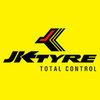Filter interviews by
Lucas-TVS Method Engineer Interview Questions and Answers
Lucas-TVS Method Engineer Interview Experiences
1 interview found
I applied via Referral and was interviewed before Jul 2023. There was 1 interview round.
(2 Questions)
- Q1. No of Stages in APQP
- Ans.
There are five stages in APQP (Advanced Product Quality Planning)
There are five stages in APQP: Planning and Definition, Product Design and Development, Process Design and Development, Product and Process Validation, and Feedback, Assessment, and Corrective Action.
Each stage has specific activities and deliverables that must be completed before moving on to the next stage.
For example, in the Product Design and Developm...
- Q2. What is RPN value FMEA
- Ans.
RPN value FMEA stands for Risk Priority Number in Failure Mode and Effects Analysis.
RPN is a numerical value used to prioritize potential failure modes based on severity, occurrence, and detection.
It is calculated by multiplying the severity, occurrence, and detection ratings assigned to each failure mode.
The higher the RPN value, the higher the priority for addressing that particular failure mode.
RPN values help teams...
Top trending discussions






Interview questions from similar companies

Interview Questionnaire
1 Question
- Q1. How you control the rejection %
- Ans.
To control rejection %, focus on quality control measures, process improvements, and employee training.
Implement strict quality control measures to identify and rectify defects early on.
Continuously improve processes to minimize errors and rework.
Invest in employee training and development to enhance skills and knowledge.
Regularly monitor rejection rates and analyze root causes to address underlying issues.
Establish ef...

I applied via Recruitment Consultant and was interviewed before Jan 2021. There was 1 interview round.
Interview Questionnaire
3 Questions
- Q1. How many level in ppap
- Ans.
There are 5 levels in PPAP (Production Part Approval Process).
PPAP has 5 levels: Level 1, Level 2, Level 3, Level 4, and Level 5.
Each level represents a different stage of the PPAP process.
Level 1 includes documentation submission, while Level 5 involves customer approval.
The higher the level, the more comprehensive the PPAP requirements become.
PPAP is used to ensure that suppliers meet the quality standards of their c
- Q2. Difference between cp and cpk
- Ans.
Cp measures the capability of a process to meet specifications, while Cpk measures the capability of a process to meet specifications considering centering.
Cp is a short-term capability index, while Cpk is a long-term capability index.
Cp considers only the spread of the process, while Cpk considers both the spread and the centering of the process.
Cp is calculated using the formula Cp = (USL - LSL) / (6 * standard devia...
- Q3. What is capa
- Ans.
CAPA stands for Corrective and Preventive Action. It is a systematic approach to identify, investigate, and resolve quality issues.
CAPA is a key component of quality management systems.
It involves identifying the root cause of a problem, implementing corrective actions to address the immediate issue, and preventive actions to prevent recurrence.
CAPA processes typically include steps like problem identification, investi...
Interview Preparation Tips

Interview Questionnaire
1 Question
- Q1. Genral diploma mechanical Related question

I applied via Recruitment Consultant and was interviewed before Jun 2020. There were 3 interview rounds.
Interview Questionnaire
3 Questions
- Q1. Technical Questions about your experience.
- Q2. Draw design for on of th le product
- Ans.
Design for a smart water bottle that tracks hydration levels and reminds users to drink water.
The bottle should have sensors to track water intake
It should connect to a mobile app to display hydration levels and send reminders
The design should be durable and leak-proof
The bottle should be easy to clean and refill
Consider adding features like temperature control or flavor infusers
- Q3. Standards of products
- Ans.
Standards of products ensure quality, safety, and reliability.
Standards are established by organizations such as ISO, ASTM, and ANSI.
They cover various aspects of products such as design, materials, and performance.
Compliance with standards is often required by law or industry regulations.
Examples of products with standards include medical devices, construction materials, and electronics.
Standards help ensure that prod...
Interview Preparation Tips
Skills evaluated in this interview

I applied via Referral and was interviewed in Apr 2024. There were 2 interview rounds.
(2 Questions)
- Q1. Why you want to associate with Yazaki
- Q2. Explain two things which keeps you different from others
(2 Questions)
- Q1. How you prevent defect from generation
- Ans.
Defect prevention can be achieved through various methods such as implementing quality control processes, conducting thorough inspections, and continuous improvement efforts.
Implementing quality control processes to catch defects early on
Conducting thorough inspections at various stages of production
Utilizing statistical process control to monitor and improve processes
Implementing error-proofing techniques to prevent h...
- Q2. Quality analysis tool explaination

I applied via Walk-in and was interviewed before Jan 2023. There was 1 interview round.
(5 Questions)
- Q1. Will you do work in my company
- Q2. Behaviour have to check
- Q3. Manpower handling
- Q4. Process handling
- Q5. This is add all questionsb

I appeared for an interview in Jan 2025.
(3 Questions)
- Q1. What is 5 core tool , 7 qc tool , 8 D , why why analysis
- Ans.
Core tools and techniques used in quality engineering include 5 core tools, 7 QC tools, 8D methodology, and the Why-Why analysis.
5 Core Tools: APQP, PPAP, FMEA, MSA, SPC
7 QC Tools: Check sheets, Pareto charts, Cause-and-effect diagrams, Histograms, Scatter diagrams, Control charts, Flowcharts
8D Methodology: Eight disciplines problem solving approach used to identify, correct, and prevent recurring problems
Why-Why Analy...
- Q2. What is the role of company in DWM
- Ans.
The role of a company in Design for Manufacturability (DWM) is to ensure that products are designed in a way that makes them easy and cost-effective to manufacture.
Ensuring that product designs are optimized for efficient manufacturing processes
Collaborating with design and manufacturing teams to identify and address potential manufacturing challenges early in the design phase
Implementing design guidelines and best pra...
- Q3. What is MSA and SPC explain
- Ans.
MSA stands for Measurement System Analysis and SPC stands for Statistical Process Control.
MSA is a method used to assess the measurement system variation to ensure data accuracy.
SPC is a method used to monitor and control a process through statistical analysis.
MSA includes Gage R&R studies to evaluate the measurement system's repeatability and reproducibility.
SPC involves using control charts to detect any variatio...
(2 Questions)
- Q1. What is process quality
- Ans.
Process quality refers to the level of consistency, accuracy, and effectiveness in the execution of a particular process.
Process quality is about ensuring that a specific process consistently meets the desired standards and requirements.
It involves identifying and eliminating defects, errors, and variations in the process to improve overall quality.
Process quality can be measured using metrics such as defect rates, cyc...
- Q2. 8D explain.
- Ans.
8D is a problem-solving methodology used in quality management to identify, correct, and prevent recurring problems.
8D stands for 8 disciplines, each representing a step in the problem-solving process
Steps include defining the problem, forming a team, identifying root causes, implementing corrective actions, and preventing recurrence
Example: A manufacturing company uses 8D to address a recurring defect in their product
Interview Preparation Tips

I applied via AmbitionBox and was interviewed before Oct 2022. There were 3 interview rounds.

(1 Question)
- Q1. Genral comman Question .
(1 Question)
- Q1. What is TCU MOTOR Allighmnent Extrusion type Heat Exchanger type
- Ans.
TCU stands for Temperature Control Unit. It is used in various industries for controlling and maintaining the temperature of different processes.
TCU is commonly used in industries such as manufacturing, automotive, and pharmaceuticals.
Motor alignment refers to the process of aligning the motor shaft with the driven equipment to ensure smooth operation.
Extrusion type refers to the process of shaping materials by forcing...
Interview Preparation Tips

I applied via Walk-in and was interviewed before May 2022. There were 2 interview rounds.

(2 Questions)
- Q1. SPC and Gd&T, process Audit
- Q2. Why are you left currently working
Lucas-TVS Interview FAQs
Tell us how to improve this page.
Lucas-TVS Interviews By Designations
- Lucas-TVS Engineer Interview Questions
- Lucas-TVS Production Interview Questions
- Lucas-TVS Quality Engineer Interview Questions
- Lucas-TVS Trainee Interview Questions
- Lucas-TVS Electrical Maintenance Engineer Interview Questions
- Lucas-TVS Production Supervisor Interview Questions
- Lucas-TVS Sales Officer Interview Questions
- Lucas-TVS Electrical Engineer Interview Questions
- Show more
Interview Questions for Popular Designations
- Methods Engineer Interview Questions
- Metallurgical Engineer Interview Questions
- Metallurgist Interview Questions
- Meter Reader Interview Questions
- Metallurgy Engineer Interview Questions
- Senior Metallurgist Interview Questions
- Metrology Engineer Interview Questions
- Mechanical Engineer Interview Questions
- Show more
Lucas-TVS Method Engineer Interview Process
based on 1 interview
Interview experience
Interview Questions from Similar Companies
Lucas-TVS Method Engineer Reviews and Ratings
based on 4 reviews
Rating in categories
|
Quality Engineer
193
salaries
| ₹1.1 L/yr - ₹7 L/yr |
|
Engineer
162
salaries
| ₹3 L/yr - ₹7.1 L/yr |
|
Production Engineer
158
salaries
| ₹1 L/yr - ₹7.6 L/yr |
|
Senior Engineer
148
salaries
| ₹4.2 L/yr - ₹10.2 L/yr |
|
Assistant Manager
92
salaries
| ₹6 L/yr - ₹14 L/yr |

Bosch

Ceat Tyres

UNO Minda

Apollo Tyres
- Home >
- Interviews >
- Lucas-TVS Interview Questions >
- Lucas-TVS Method Engineer Interview Questions










